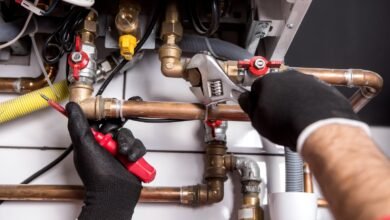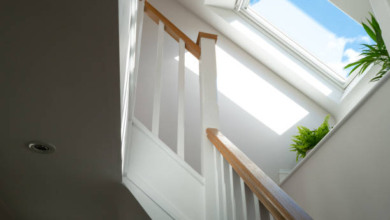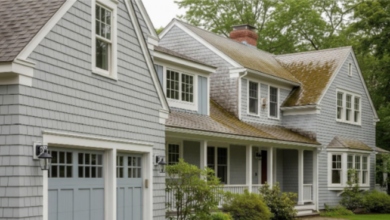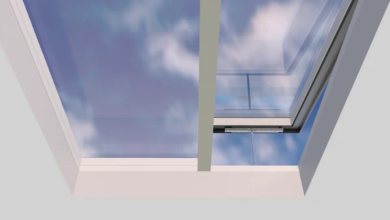Water Damage Repair Services: From Assessment to Completion
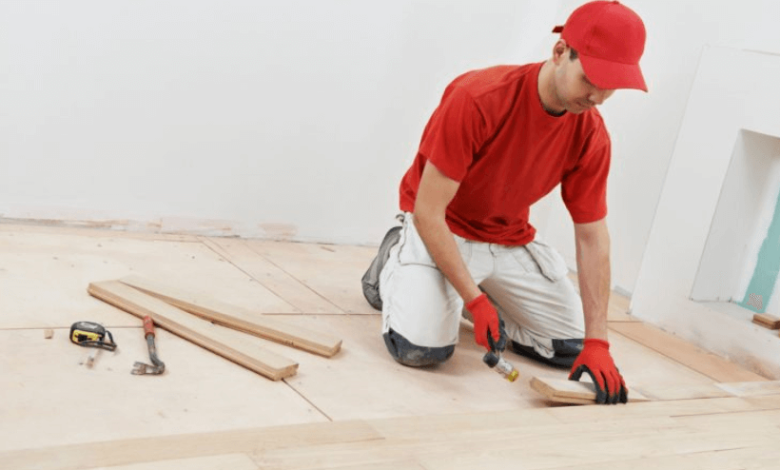
Water damage repair services encompass the comprehensive process of restoring properties affected by water intrusion, addressing both immediate damage and long-term structural concerns. Unlike simple cleanup efforts, professional water damage repair services combine emergency response, scientific drying techniques, sanitation protocols, and skilled reconstruction to return properties to pre-loss condition or better. Understanding the full scope of these services helps property owners appreciate the complexity of proper restoration and recognize the value that professional expertise brings to recovery efforts.
The Comprehensive Scope of Water Damage Repair Services
Water damage repair services extend far beyond removing standing water and setting up fans. Comprehensive restoration addresses multiple interconnected aspects of water damage, each requiring specialized knowledge and techniques. The initial emergency response stabilizes the situation, preventing damage from worsening while assessment teams gather critical information about damage extent and severity.
Water extraction represents the first active restoration step, utilizing powerful pumps and extractors to remove standing water and pull moisture from porous materials. However, visible water removal completes only the beginning of the process. Structural drying employs strategic equipment placement, scientific monitoring, and adjustment protocols to eliminate moisture from building materials thoroughly. This phase typically requires several days of continuous operation, with technicians monitoring progress twice daily and adjusting equipment configurations based on moisture measurements.
Cleaning and sanitization address contamination concerns that water creates. Even clean water becomes contaminated as it contacts building materials, carrying dissolved substances, bacteria, and particulates throughout affected areas. Water damage repair services include thorough cleaning of all affected surfaces using appropriate antimicrobial treatments based on water category and contamination levels. This essential step prevents future health problems and ensures that restored spaces remain safe for occupancy.
Deodorization techniques eliminate musty odors that water damage creates. Standard air fresheners merely mask odors temporarily, while professional deodorization neutralizes odor-causing molecules at their source. Techniques range from thermal fogging and ozone treatment to hydroxyl generation, selected based on odor severity and affected materials.
Reconstruction completes the water damage repair services process, rebuilding damaged structures and replacing materials beyond salvage. This phase may involve minor repairs like replacing drywall sections and baseboards or extensive reconstruction of entire rooms or building areas. Professional water damage repair services coordinate all trades necessary for complete restoration, from carpenters and electricians to painters and flooring installers.
See also: Cloud Kitchen And The Evolution Of Food Services
Specialized Equipment That Powers Water Damage Repair Services
The effectiveness of water damage repair services depends heavily on equipment quality and proper utilization. Professional-grade tools differ dramatically from consumer equipment in power, capacity, and specialized functions. Understanding this equipment illuminates why professional services achieve results impossible through DIY efforts.
Water extraction equipment begins the active restoration process. Truck-mounted extractors provide the most powerful water removal, using vacuum systems that pull thousands of gallons per hour while generating heat that begins the drying process. Portable extractors offer flexibility for interior spaces and upper floors, while submersible pumps handle deep standing water efficiently. Specialized extraction tools address unique situations, such as hardwood floor drying systems that remove water trapped beneath flooring without requiring removal.
Air movement equipment creates the airflow patterns essential for efficient drying. Axial air movers deliver high-velocity airflow across large surface areas, promoting rapid evaporation from floors, walls, and contents. Centrifugal air movers generate focused, high-pressure airflow suitable for directing air into cavities and confined spaces. Low-profile air movers fit beneath cabinets and furniture, ensuring comprehensive coverage throughout affected areas. Strategic placement of these devices, typically one air mover per 10-15 feet of affected area, creates the turbulent airflow necessary for optimal drying.
Dehumidification equipment removes moisture from air, enabling continued evaporation from wet materials. Refrigerant dehumidifiers cool air below its dew point, condensing water vapor that drains away or collects in reservoirs. These units work effectively in moderate humidity environments and offer energy efficiency for standard drying scenarios. Low-grain refrigerant (LGR) dehumidifiers achieve significantly lower humidity levels, essential for thorough drying of dense materials like hardwood and plaster. Desiccant dehumidifiers use moisture-absorbing materials, working effectively even in cold environments where refrigerant units struggle.
Monitoring and detection equipment guides water damage repair services throughout the restoration process. Pin-type moisture meters measure moisture content in wood, drywall, and other materials through electrical resistance between pins. Pinless moisture meters use electromagnetic waves to scan larger areas without damaging surfaces. Thermo-hygrometers track temperature and relative humidity, providing data for psychrometric calculations that predict drying progress. Thermal imaging cameras visualize temperature differences that indicate moisture presence behind walls, above ceilings, and under floors, revealing hidden damage that visual inspection misses.
The Science Behind Effective Water Damage Repair Services
Professional water damage repair services apply scientific principles to achieve thorough, efficient drying. Psychrometry, the study of air and moisture relationships, provides the foundation for understanding how materials dry and how to optimize conditions for moisture removal. This scientific approach distinguishes professional restoration from amateur efforts that rely on guesswork and generic timelines.
Evaporation occurs when moisture in materials has higher vapor pressure than surrounding air. Temperature, humidity, and airflow all influence evaporation rates. Warming affected areas increases evaporation rate by raising vapor pressure in materials and enabling air to hold more moisture. However, without dehumidification, air quickly becomes saturated, halting further evaporation. Dehumidifiers maintain low humidity levels in air, sustaining the vapor pressure difference that drives continued evaporation.
Airflow prevents saturation at material surfaces by constantly replacing moisture-laden air with drier air from dehumidifiers. Still air near wet surfaces quickly becomes saturated, creating a barrier that prevents additional evaporation. Turbulent airflow from properly positioned air movers continuously refreshes air at material surfaces, maintaining conditions conducive to ongoing evaporation.
Water damage repair services monitor specific gravity, the ratio between actual moisture in air and maximum moisture air can hold at current temperature. Lower specific gravity indicates drier air with greater capacity to absorb moisture from materials. Professional technicians calculate specific gravity regularly, adjusting equipment and techniques to maintain optimal drying conditions throughout the process.
Material porosity significantly affects drying time and techniques required. Non-porous materials like metal and glass dry quickly once surface water is removed. Semi-porous materials, including wood and concrete, absorb water into their structure but release it relatively readily with proper drying techniques. Porous materials like drywall, insulation, and upholstery absorb water quickly and deeply, requiring extended drying periods and often replacement when heavily saturated.
Addressing Different Water Categories in Repair Services
Water damage repair services adapt techniques based on water contamination levels, categorized from clean to highly contaminated. Each category requires specific protocols to ensure both effective restoration and occupant safety. Category 1 water originates from sanitary sources like supply lines, rain, or melting snow. While initially clean, Category 1 water can degrade to Category 2 if left untreated for 48 hours or longer, as it picks up contaminants from building materials and provides an environment for bacterial growth.
Water damage repair services for Category 1 water focus on rapid extraction and drying. Affected materials can often be saved if addressed promptly. Technicians clean surfaces with standard cleaning agents and antimicrobial treatments, ensuring that materials remain sanitary as they dry. Contents affected by Category 1 water typically receive standard cleaning and drying procedures.
Category 2 water, or gray water, contains contaminants that may cause discomfort or illness. Sources include washing machine overflow, dishwasher leaks, aquarium spills, and toilet overflow containing urine but no feces. Category 2 water damage repair services require more aggressive cleaning and sanitization. Porous materials that absorb Category 2 water often require replacement rather than drying, particularly items difficult to clean thoroughly like carpet padding and insulation. Contents receive specialized cleaning using antimicrobial agents appropriate for the contamination level.
Category 3 water, known as black water, contains pathogenic agents and toxic materials. Sewage backups, flooding from rivers or streams, and toilet overflow with feces all constitute Category 3 situations. Water damage repair services for black water require extensive personal protective equipment for technicians and aggressive material removal. Porous materials contacted by Category 3 water almost always require disposal rather than cleaning. Affected structural elements receive thorough cleaning and antimicrobial treatment, with some materials requiring sealing after cleaning to encapsulate residual contamination.
As water migrates through properties, it can spread contamination. Category 2 or 3 water that flows onto or through Category 1 materials elevates those materials to the higher contamination category. Professional water damage repair services trace water migration patterns carefully, ensuring that all affected areas receive treatment appropriate to the highest contamination level they contacted.
Structural Repairs in Water Damage Repair Services
Reconstruction represents the final phase of comprehensive water damage repair services, addressing structural damage and replacing materials beyond salvage. The extent of reconstruction varies dramatically based on damage severity, ranging from cosmetic repairs to complete room rebuilds. Professional coordination of various trades ensures that reconstruction proceeds efficiently and meets applicable building codes.
Drywall repair constitutes one of the most common reconstruction needs. Water-damaged drywall loses structural integrity and often harbors mold growth. Water damage repair services typically remove drywall from floor level to at least two feet above visible water lines, as wicking draws moisture higher than obvious damage suggests. After structural drying confirms that framing lumber reaches acceptable moisture levels, technicians install new drywall, tape and finish seams, and prepare surfaces for painting.
Flooring replacement requires careful material selection and proper installation techniques. Hardwood flooring damaged by water may be salvageable with specialized drying techniques if addressed quickly, though some cupping or crowning may persist. Severely damaged hardwood requires replacement, with new flooring acclimated to indoor conditions before installation to prevent future problems. Laminate flooring almost always requires replacement after water damage, as core materials swell and delaminate irreversibly. Carpet and padding affected by Category 2 or 3 water typically require disposal and replacement. Tile flooring often survives water damage, though grout may require replacement and subfloor damage underneath demands attention.
Insulation replacement becomes necessary when water saturates these materials. Fiberglass batt insulation retains moisture and rarely dries adequately, requiring removal and replacement after water damage. Blown-in insulation may be salvageable in limited circumstances but typically requires replacement to prevent mold growth and maintain thermal performance. New insulation installation follows removal, ensuring that wall and ceiling cavities receive proper coverage for energy efficiency.
Paint and finishes complete the reconstruction process, returning surfaces to their pre-damage appearance or better. Water damage repair services typically apply stain-blocking primers before finish painting to prevent water stains from bleeding through new paint. Matching existing paint colors and finishes requires attention to detail, though significant damage often provides opportunity for updating color schemes and finishes throughout affected spaces.
Contents Restoration Within Water Damage Repair Services
Professional water damage repair services extend beyond structural restoration to include contents cleaning and restoration. Personal belongings, furniture, electronics, documents, and other items require specialized handling based on materials, value, and damage severity. Pack-out services remove contents from affected areas, facilitating structural restoration while protecting items from further damage during the drying process.
Furniture restoration techniques vary by material and construction. Solid wood furniture often survives water damage with proper drying, though finishes may require refinishing. Upholstered furniture affected by Category 1 water may be cleanable, though Category 2 or 3 water typically necessitates disposal due to contamination concerns and difficulty achieving thorough sanitization. Laminate and particleboard furniture rarely survives significant water exposure, as core materials swell and crumble.
Electronics require specialized evaluation and cleaning. Water damage repair services often partner with electronics restoration specialists who can disassemble devices, clean components, and test functionality. Quick action improves salvage rates, as corrosion progresses rapidly once water contacts electronic components. However, property owners should understand that even professional cleaning cannot guarantee electronics functionality after water exposure.
Document recovery employs various techniques based on document type and damage severity. Freeze-drying preserves water-damaged documents while preventing mold growth, allowing restoration attempts after initial stabilization. Air drying works for limited quantities of documents, though pages may wrinkle or discolor. Vacuum thermal drying combines freeze-drying and heat application for more efficient processing of large document volumes. Professional document restoration can often salvage important papers, photographs, and books that initially appear ruined.
Textile cleaning removes contamination and odors from clothing, linens, and other fabric items. Standard laundering suffices for items affected by Category 1 water, while Category 2 contamination requires sanitizing wash cycles or dry cleaning. Category 3 water damage typically necessitates disposal of porous textile items due to contamination concerns.
Quality Assurance in Water Damage Repair Services
Reputable water damage repair services implement quality assurance protocols that verify restoration completeness and effectiveness. These measures protect property owners by ensuring that work meets industry standards and prevents future problems from inadequate restoration. Moisture verification represents the cornerstone of quality assurance. Before considering drying complete, technicians verify that all affected materials reach acceptable moisture content levels. Industry standards specify target moisture levels for various materials, typically 12-15% for wood, depending on species and climate.
Antimicrobial effectiveness receives verification through visual inspection and air quality testing when necessary. Surfaces should appear clean and free of visible contamination, while air quality testing can confirm that microbial loads remain within acceptable ranges. Odor elimination verification relies partly on subjective assessment but should confirm that musty or unpleasant smells no longer permeate affected areas.
Structural integrity assessment ensures that building components remain sound after water damage repair services complete their work. Technicians inspect framing members, floors, and ceilings for signs of remaining damage or weakness. Any structural concerns receive attention before reconstruction proceeds, ensuring that finished work rests on solid foundations.
Documentation provides evidence of thorough restoration and supports warranty claims if future problems emerge. Comprehensive documentation includes initial damage assessment photos, moisture readings throughout the drying process, photos of demolition and reconstruction phases, and final verification measurements. This documentation proves invaluable for insurance claims and provides records for future reference.
Working With Insurance Through Water Damage Repair Services
Most water damage repair services work extensively with property insurance companies, providing valuable assistance throughout the claims process. Understanding this relationship helps property owners navigate insurance aspects of restoration. Documentation services represent a primary benefit of working with insurance-experienced restoration companies. These companies photograph damage thoroughly, prepare detailed estimates using industry-standard software, and maintain communication with insurance adjusters.
Direct billing arrangements simplify payment processes for property owners. Many water damage repair services accept assignment of benefits, allowing them to bill insurance companies directly and accept claim payments. This arrangement reduces out-of-pocket expenses for property owners and eliminates the need to pay upfront and await reimbursement.
Scope negotiation between restoration companies and insurance adjusters occasionally requires property owner involvement. Insurance adjusters may dispute certain restoration elements or costs, while restoration companies advocate for thorough, proper restoration. Understanding that both parties ultimately serve the property owner’s interests helps navigate disagreements productively.
Deductible obligations remain the property owner’s responsibility even when restoration companies bill insurance directly. Understanding deductible amounts and payment timing prevents surprises during the restoration process.
Conclusion
Water damage repair services encompass a complex, multifaceted process that combines emergency response, scientific drying techniques, sanitation protocols, and skilled reconstruction. Professional restoration companies bring specialized equipment, technical knowledge, and coordinated trades that enable thorough property recovery. From initial water extraction through final reconstruction, each restoration phase requires specific expertise and attention to detail. Understanding the comprehensive scope of water damage repair services helps property owners appreciate the value of professional restoration and make informed decisions during stressful circumstances. Proper water damage repair not only restores properties to pre-damage condition but also prevents long-term problems that inadequate restoration creates. By choosing qualified professionals and understanding the restoration process, property owners position themselves for successful recovery from water damage events, protecting their property investments and ensuring safe, healthy environments for occupants.

